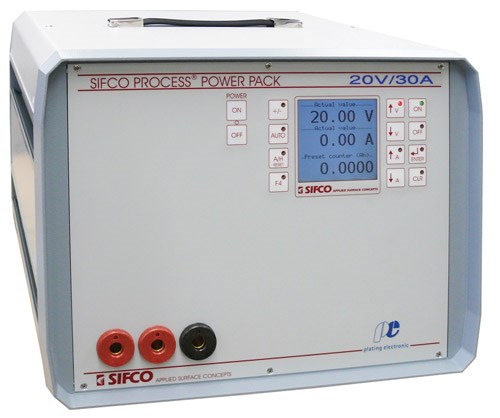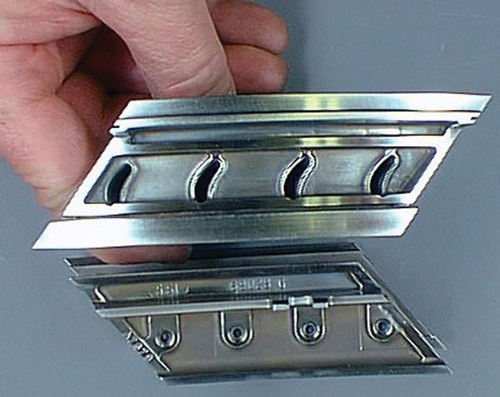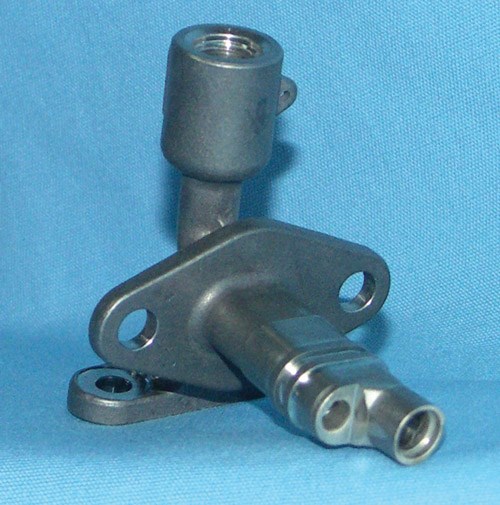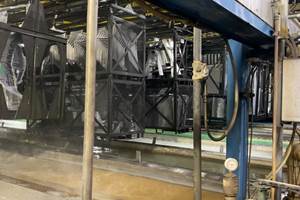Selective brush plating is much more than just a touch-up repair process. Hundreds of applications are using the selective brush plating process to provide surface enhancement coatings to aircraft OEM applications.
For several decades, selective plating provided the needed technology that aerospace and aircraft personnel required to maintain their aircraft. Selective brush plating’s success started as a touchup repair process for restoring metal on components that have become damaged or corroded. This was reinforced by its inclusion as an approved method of aircraft maintenance in the Federal Aviation Administration’s Advisory Circular 43.13-1A and by most major airlines around the world in their overhaul manuals or standard practices.
In addition, the British Defense Ministry, U.S. Air Force and other military organizations around the world recognize its importance and value to maintaining their fleets.
Selective brush plating is capable of depositing metallic coatings that are metallurgically sound with excellent adhesion and good mechanical properties. Deposits such as cadmium, zinc-nickel, tin-zinc, nickel, cobalt, copper, tin, zinc and silver —as well as anodizing Types I, II, III, phosphoric, and boric-sulfuric—can be precisely applied.
Common Uses
The process is known to be portable, fast, easy to use, reliable, environmentally friendly and requiring minimal masking. It is used in many aircraft OEM applications including landing gear, engines, instruments and accessories, hydraulics and avionics. These applications require adding metal to existing surfaces for a variety of reasons. Five of the most common uses are:
- Enhancing corrosion protection
- Improving braze characteristics with a flash of nickel
- Improving surface properties
- Restoration of tolerance conditions
- Repairing aluminum components
The Process
Brush plating is a contact method of electroplating in which metals are deposited onto localized areas using an absorbent pad-wrapped anode saturated with a proprietary plating solution (selective anodizing can be accomplished using a similar technique). Brush techniques are suitable for simple geometric shapes such as outer diameters, interior diameters and flat surfaces.
The basic items needed are a portable rectifier (power pack), plating tools, masking materials and solutions. For electroplating, the part becomes the cathode and is connected to the negative terminal of the power pack. The positive terminal is connected to a “tool” handle, and an anode that is wrapped with an absorbent material that provides insulation and wear resistance as the tool moves over the part. The appropriate solution -- which can be fed with a pump -- completes the electrical circuit. The deposition rates can be about 0.035 inches/hour, which means quick plating of the part.
Base material specific procedures have been developed to ensure excellent adhesion of the deposit onto all of the commonly used metals, but identifying the substrate is crucial as the appropriate preparatory procedure is determined by both the substrate and the plating solution selected. Mild steel, high alloy steels, cast iron, copper, nickel, aluminum, and stainless steels all require different preparatory treatments.
The surface is prepared only where the plating is required. Masking fixtures can be used for repetitive or high volume applications. The area to be masked must be cleaned to ensure that masking materials will adhere. Grease and soil are removed with a solvent; steel wool, emery paper, wire brushing, or sand blasting is used to remove scale, rust or tarnish. The parts are then ready for electrocleaning, etching, desmutting, and/or activation in accordance with supplier procedures.
The variety of available selective plated deposits provides alternatives for excellent corrosion protection and hardness and wear resistance depending upon the deposit plated. In most cases the deposits meet or exceed all the performance requirements of federal, military and commercial specifications for tank plating. There are also comparable standards written specifically for brush plating.
In addition, work continues on advancing the selective brush plating process by developing and improving deposits and the process itself through advancements in plating onto titanium and the development of a cobalt chromium carbide metal matrix deposit used in high temperature applications.
























